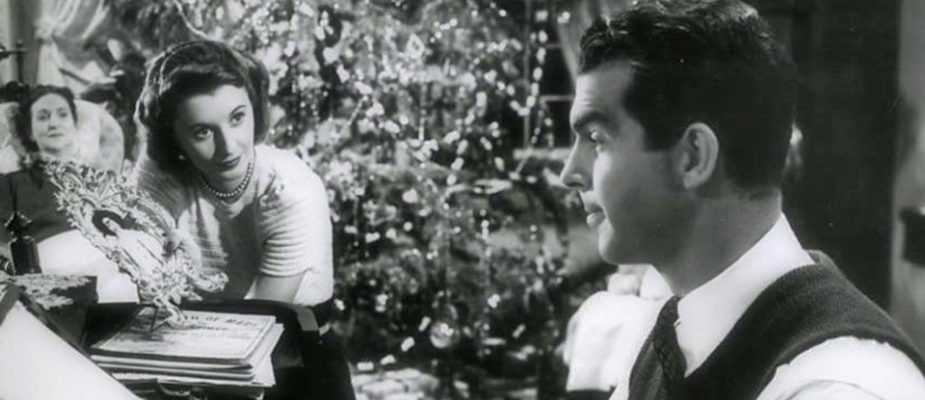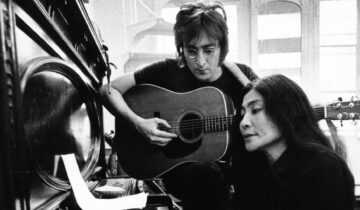This holiday season, Museum Films is excited to present Merry Little Christmas: Classic Holiday Films from the 1940s, a series of beloved Hollywood classics screening each Saturday afternoon throughout the month of December.
Boasting the release of perennial favorites like It’s a Wonderful Life and Miracle on 34th Street, the 1940s can be viewed both as a golden age for the classical Hollywood Christmas film and as a starting point for the development for the holiday movie as a distinct genre, in which the yuletide season prompts personal reflection, the righting of wrongs or a desire to reconnect.
In Remember the Night, the period between Christmas and the New Year offers a shoplifter played by Barbara Stanwyck a chance to make peace with her past, atone for her crime and fall in love – although not necessarily in that order. Both The Bishop’s Wife and It’s a Wonderful Life feature angelic messengers sent down to earth to teach their heroes crucial lessons about the importance of family and the meaning of life.
Marked by the upheaval and uncertainty of WWII, the holiday films of the 1940s also offered nostalgic visions of abundance and togetherness, produced in the hope that the end of the war would see a return to health, prosperity and community.
Produced during the war, Vincente Minnelli’s Meet Me in St. Louis presents a dreamlike, rose-colored fantasy of Midwestern family life at the turn of the 20th century. Although Minnelli’s film chronicles four seasons in the life of the close-knit Smith family, Judy Garland’s iconic performance of the melancholy holiday ballad “Have Yourself a Merry Little Christmas,” written specifically for the film, earns it a place in the yuletide cannon. Looking to comfort her little sister Tootie, who is despondent over her family’s impending move to New York City, Garland’s character Esther Smith sings to her about a future where “we all will be together” and “all our troubles will be out of sight.” It’s a sentiment with which many contemporary families who have seen their holidays affected by pandemic-fueled separations and sacrifices can identify.
In the Oscar-winning comedy Miracle on 34th Street, a kindly department store Santa Claus helps a skeptical single mother reclaim her Christmas spirit and her faith in in the goodness of others. While Miracle on 34th Street was a critical and commercial hit, the studio initially kept its Christmas setting secret, releasing it during the summer, when box office returns tended to be higher.
While contemporary film producers tend to view a holiday setting as a selling point, 1940s studios viewed it as an unknown quantity, a marketing puzzle to be solved. It’s fascinating to watch the original trailers for Miracle on 34th Street and The Bishop’s Wife – both released in 1947 – which feature actors and producers on the studio backlot trying to figure out how to craft trailers that will speak to the unique films they promote, while never once mentioning Christmas, Santa Claus, angels or the holiday season.
In the Bishop’s Wife promo, stars Cary Grant, Loretta Young and David Niven ultimately decide not to make a trailer, preferring to let their “most unusual picture” speak for itself. In the Miracle on 34th Street trailer, a fictional 20th Century Fox executive interviews a variety of Fox actors who have all seen and loved the films for different reasons. He eventually discovers that Miracle on 34th Street can be all things to all people: hilarious, romantic, exciting, and even (in emerging teen slang) “groovey.”










